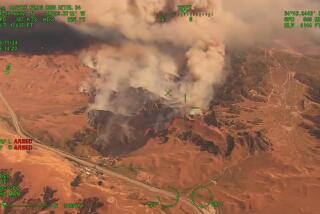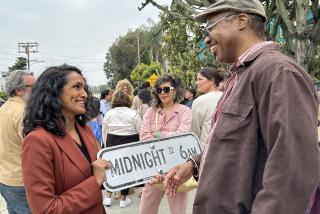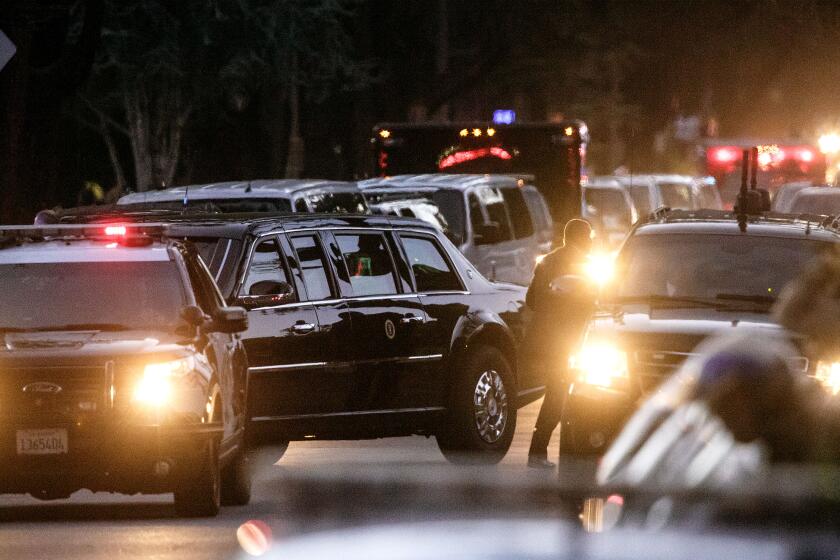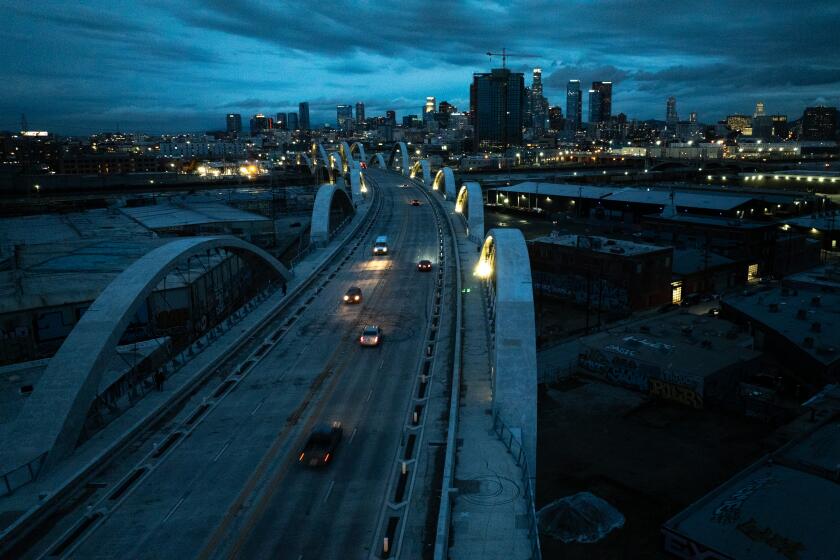Transit Zone Could Save $50 Million
A separate San Fernando Valley transit zone could take over up to 50 existing bus lines and save the Metropolitan Transportation Authority up to $50 million, but more study is necessary to determine whether such a zone would be politically and logistically feasible, according to a city report released Wednesday.
A transit zone would be an administrative subsidiary that would still be part of the MTA but operate semiautonomously under its own board, making it subject to greater local control.
A separate zone would give the Valley a chance “to tailor transit systems more closely to the needs of the local community and make the management of service more responsive to community concerns,” said the report, the first official analysis of the concept since it was introduced this fall.
The MTA board would have to agree to delegate some of its authority to the new zone, which could take over operation of 30 MTA bus routes now serving the Valley, which cost the cash-strapped agency about $120 million a year.
Another 20 bus lines run by the cities of Los Angeles, Glendale and Santa Clarita, and lines in the Antelope Valley, could also come under the aegis of a San Fernando Valley zone, the report says.
But James Okazaki, head of the city’s transit programs, said city planners need more time to contact other municipalities, from Calabasas to Burbank, about their interest in joining such an effort. And his staff will require outside experts to identify the routes and costs that a Valley zone would take over, he said.
“We really need more help in assembling some of the [information], particularly the financial aspect,” he told the City Council’s transportation committee Wednesday.
To justify its existence financially, a new zone, covering a minimum of 50 square miles, would have to demonstrate that it could cut current costs by at least 25% to meet a requirement in the state public utilities law.
*
Okazaki said he was encouraged by the example of the Foothill Transit District, an agency serving the San Gabriel Valley that has doubled ridership and extended service hours while reducing costs by more than 40% since its creation several years ago.
“It’s a model for us to try to emulate,” Okazaki said.
The report did not specify how the projected savings of $50 million could be achieved, but raised the possibility of contracting with private companies to provide some services.
Officials warned that it might be a hard sell to convince the MTA that a new agency would do a better job and that the regional agency should voluntarily shed some of its responsibilities.
Another potential objection could come from the MTA’s labor unions, which would probably insist on equal recognition and treatment in the new zone.
Councilman Richard Alarcon, the head of the transportation panel and author of the motion to explore a separate transit zone, expressed concern that the Valley be represented both in the process of developing a zone and then in its governance.
“To bring the community into this process is essential,” said Alarcon, who plans public hearings on the issue early in the new year.
Planners are expected to complete a rough draft within 45 days of a report outlining the area, routes and costs of such a proposed Valley transit zone.
They have also recommended that the City Council approve a $25,000 contract with a private transit management firm to help them gather the necessary data for the report.
More to Read
Start your day right
Sign up for Essential California for news, features and recommendations from the L.A. Times and beyond in your inbox six days a week.
You may occasionally receive promotional content from the Los Angeles Times.







